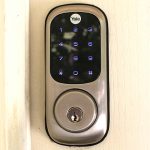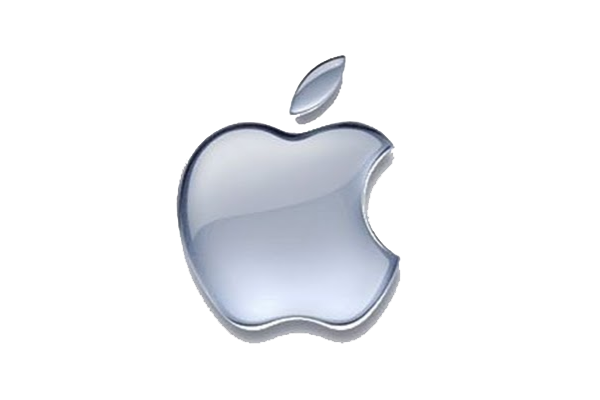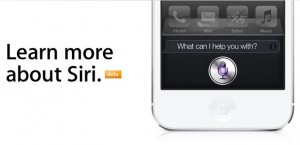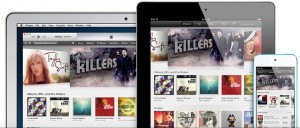Is Apple getting ready to make the jump into home automation? While I am a very small shareholder (50 shares), I do not get any special information from the company. With that said, I think Apple moving to home automation makes sense. Reports recently highlight Apple’s iPhone sales, and there is the constant chatter around a new Apple branded TV and wristwatch. I think the exciting products Mr. Cook is referring to is actually home automation related.
Apple’s engineers at Silicon Valley Fry’s Electronics Stores
One thing several folks have noticed in the bay area recently is that individuals with Apple employee badges are being spotted regularly at electronics stores nearby Cupertino, California. The Fry’s in Campbell and near AMD’s headquarters in Santa Clara both have seen regular foot traffic in the surveillance and home automation sections.
For those that are not familiar with Fry’s it is a very large computer and electronics retailer that is prominent in the Silicon Valley. Generally one can get everything from motherboards, smartphones, LED case fans fans, books, vacuum cleaners and even toaster ovens in a Fry’s. Just by virtue of the fact that employees at Apple, and working in the technology sector, there may be no correlation. If you are an engineering type in the Silicon Valley, there is a good chance you have been to Fry’s just to pick up the occasional miscellaneous part.
Then again, Fry’s is also one of the first places I go to do market research. The products people are standing around are the ones that tend to be hot topics of conversation and the future trend setters. Before the Samsung Galaxy S III officially changed the cell phone game, people were playing with it at Fry’s. Apple employees being seen at Fry’s is nothing unusual but there does seem to be a coincidence.
Making Siri not suck
Apple introduced Siri to much fanfare. Instead of hunting and pecking on the small iPhone screen, a user could simply ask Siri. We saw numerous tasks on commercials with famous folks about Siri.
There is one striking similarity to all of the commercials: Siri is being used at home. Of course, to demonstrate Siri’s somewhat limited capabilities, Siri came out in other spaces including dinner tables and the office.
Siri sucks in the office. As office culture evolved into cubicle culture and now into shared workspaces at more companies, one talking to their phone interrupts others and looks strange. Phones are needed for business but anyone sitting in a shared workspace and who has heard someone talk to Siri has also seen about a dozen people roll their eyes in disgust.
If there is one place Siri shines, it is at home and in the car. If Apple finds its way to home automation, Siri can be a corner-piece. “Siri turn on my kitchen lights.” or “Siri did I leave the garage door open this evening?” In the confines of one’s own home, Siri can shine. This is not a bold new prediction, plenty of commentators noted as much when the Apple branded TV rumors were common.
Apple needs a bigger ecosystem
Apple has an ecosystem around music and video (iTunes). Apple has a software ecosystem (the App store both for OS X and iOS). Apple has a hardware and accessory ecosystem. One recent note is that Apple is moving into better automobile integration.
The simple fact of life is that there are a lot of smartphones, tablets, computers and televisions serving the world’s 7 billion people. The downside is that human beings can only view 1-3 devices at any time. Google is trying to add an additional screen with Glass.
Connecting the various devices that were traditionally low-tech can be a much bigger market. While each of the world’s 7 billion people may have a smartphone, tablet and computer one day, my sense is that there are many more than 28 billion light sockets, light switches, thermostats, garage door openers, security cameras, blenders and etc. in the world.
One could easily argue that the watch idea is a bit scary for Apple. Aside from the watch connoisseur, most individuals purchase watches on much longer replacement cycles than they do phones and laptops. The number of net-new apps for the ecosystem would be lower. TV of course has a similarly longer replacement cycle but has the prospect of more value added services like streaming TV. In terms of absolute numbers, Apple branded TV’s to individuals is going to be around 1:1. There are 7 billion people with two wrists. Apple may be able to change fashion to make multiple wrist watches attractive but 7 billion people / 1 watch each on a 5 year replacement is a maximum of 1.4b watches a year. Then again, it still doesn’t buy Apple a new ecosystem.
In terms of scale and scope, Apple had $156B USD in sales last year. Just Home Depot and Lowe’s combined for about $125B. Of course, a lot of that is in goods that will not be connected, but there are also a ton of blenders, toaster ovens and etc. not sold under those two brands, and sold outside of the US. That is an ecosystem that would yield massive revenue streams for Apple.
Reinventing the ecosystem may be huge
As people bought-into the iPod, iPhone and iPad ecosystems, demand for Apple computers picked up. This was explained by the ecosystem effect. The same way as people purchase additional Apple-specific accessories. The market expanded.

If Apple introduces not just branded Apple TV but takes home automation on, they could catalyze the building industry and the consumer electronics industry by reaching out with an Apple Connected Home program where electronics companies pay to integrate into Apple’s system.
Case and point. I purchased a house with a late 1990’s era brass door handle. The lock worked. Not soon after I replaced the lock by a different handle and deadbolt. A year later, the deadbolt was swapped for a Z-Wave enabled touchpad deadbolt. The point here is that a perfectly good fixture was removed for a new functionality.
Of course, for anyone that has seen the cost of modern office security and automation systems will realize that the technology could easily move beyond the home.
Home automation is a highly fragmented market right now. Everyone from service providers to traditional hardware manufacturers are trying to get their technology into customer’s hands. Still, there are many competing standards. The market is ripe for a company homogenizing the technology.
Apple on defense: Google’s Android is gaining a foothold
On the competition front, a 150 year old lock company is not going to be able to withstand Apple rolling out an ecosystem of products. Apple does have a key competitor: Android. The reason for this is very simple, Android is the de-facto standard traditional companies are standardizing around. If Apple does not execute, at some point a communications and control standard will win and Android/ Linux will be there.
The big message here is that there is only so long Apple can stay out of the market before the market runs Android and finds a common set of protocols.
Conclusion
Again, this may be far-fetched and I have no special knowledge that this is actually happening. I thought we would have an Apple branded television a year ago. As one of the world’s smallest Apple shareholders, hopefully Tim Cook is just about to announce this stuff. The home automation market is not new. It is however highly fragmented which is something Apple looks for in a market. It also has huge potential to expand the app universe and overall Apple ecosystem.
A final thought: If one has an iOS powered home, how likely will users in that home be to Apple products in the future?
Comments and thoughts always welcome.







I saw three guys at the Frys off 17 a few weeks ago with a few items in their hands. They had Apple badges.
I *really* hope that Apple is doing more to research home automation than visiting Fry’s, which in truth has about the worst selection of home automation equipment imaginable.
We do the same thing at our local electronics retailers for the segment we are in. Even just to see what packaging the retailers are picking up and to watch customers buy our products and competitors’ products.